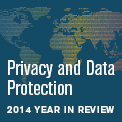On April 1, 2015, the Office of the National Coordinator for Health Information Technology (ONC), which assists with the coordination of federal policy on data sharing objectives and standards, issued its Shared Nationwide Interoperability Roadmap and requested comments. The Roadmap seeks to lay out a framework for developing and implementing interoperable health information systems that will allow for the freer flow of health-related data by and among providers and patients. The use of technology to capture and understand health-related information and the strategic sharing of information between health industry stakeholders and its use is widely recognized as critical to support patient engagement, improve quality outcomes and lower health care costs.
On April 3, 2015, the Federal Trade Commission issued coordinated comments from its Office of Policy Planning, Bureau of Competition, Bureau of Consumer Protection and Bureau of Economics. The FTC has a broad, dual mission to protect consumers and promote competition, in part, by preventing business practices that are anticompetitive or deceptive or unfair to consumers. This includes business practices that relate to consumer privacy and data security. Notably, the FTC’s comments on the Roadmap draw from both its pro-competitive experience and its privacy and security protection perspective, and therefore offer insights into the FTC’s assessment of interoperability from a variety of consumer protection vantage points.
The FTC agreed that ONC’s Roadmap has the potential to benefit both patients and providers by “facilitating innovation and fostering competition in health IT and health care services markets” – lowering health care costs, improving population health management and empowering consumers through easier access to their personal information. The concepts advanced in the Roadmap, however, if not carefully implemented, can also have a negative effect on competition for health care technology services. The FTC comments are intended to guide ONC’s implementation with respect to: (1) creating a business and regulatory environment that encourages interoperability, (2) shared governance mechanisms that enable interoperability, and (3) advancing technical standards.
Taking each of these aspects in turn, creating a business and regulatory environment that encourages interoperability is important because, if left unattended, the marketplace may be resistant to interoperability. For example, health care providers may resist interoperability because it would make switching providers easier and IT vendors may see interoperability as a threat to customer-allegiance. The FTC suggests that the federal government, as a major payer, work to align economic incentives to create greater demand among providers for interoperability.
With respect to shared governance mechanisms, the FTC notes that coordinated efforts among competitors may have the effect of suppressing competition. The FTC identifies several examples of anticompetitive conduct in standard setting efforts for ONC’s consideration as it considers how to implement the Roadmap.
Finally, in advancing core technical standards, the FTC advised ONC to consider how standardization could affect competition by (1) limiting competition between technologies, (2) facilitating customer lock-in, (3) reducing competition between standards, and (4) impacting the method for selecting standards.
As part of its mission to protect consumers, the FTC focuses its privacy and security [...]
Continue Reading
read more

 Subscribe
Subscribe


